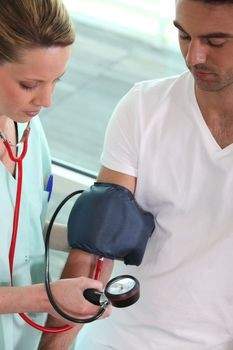Nuclear Stress Testing
Nuclear stress testing has emerged as a sophisticated and powerful tool in the realm of cardiovascular diagnostics, offering a unique perspective into the heart's function and blood flow. This non-invasive imaging technique combines exercise or pharmacological stress with the use of a small amount of radioactive material, providing healthcare professionals with valuable insights into cardiac health.
The procedure involves the injection of a radiotracer, a mildly radioactive substance, into the bloodstream. The radiotracer is taken up by the heart muscle in proportion to blood flow, allowing for the visualization of blood distribution to different regions of the heart. This is particularly useful in identifying areas with reduced blood flow, which may be indicative of coronary artery disease (CAD) or other cardiovascular conditions.
Nuclear stress testing is commonly performed in two phases: the stress phase and the rest phase. During the stress phase, the patient undergoes physical exercise on a treadmill or receives pharmacological stress to simulate the increased demand on the heart.

Simultaneously, a gamma camera captures images of the heart, showcasing its response to stress. The rest phase involves a similar imaging process, allowing for a comparison of blood flow patterns at rest and under stress. One of the significant advantages of nuclear stress testing is its ability to detect ischemic heart disease, a condition characterized by insufficient blood flow to the heart muscle. The test provides valuable information about the severity and location of coronary artery blockages, aiding in risk stratification and treatment planning.
Pharmacological stress testing is often employed for patients who may be unable to undergo physical exercise. Medications such as adenosine or dobutamine are administered to simulate the stress on the heart, allowing for a comprehensive evaluation of cardiovascular function.
The integration of nuclear stress testing into clinical practice has revolutionized the approach to cardiac imaging. Its high sensitivity and specificity make it an invaluable tool for diagnosing CAD, assessing the efficacy of interventions, and guiding further management decisions. Additionally, the procedure is considered safe, with the amount of radiation exposure being minimal and well within established safety guidelines.
In conclusion, nuclear stress testing stands at the forefront of cardiovascular diagnostics, providing a non-invasive and detailed assessment of blood flow to the heart. By combining stress simulation with nuclear imaging, this technique offers a comprehensive view of cardiac function, enabling healthcare professionals to make informed decisions for the effective management of cardiovascular conditions.
